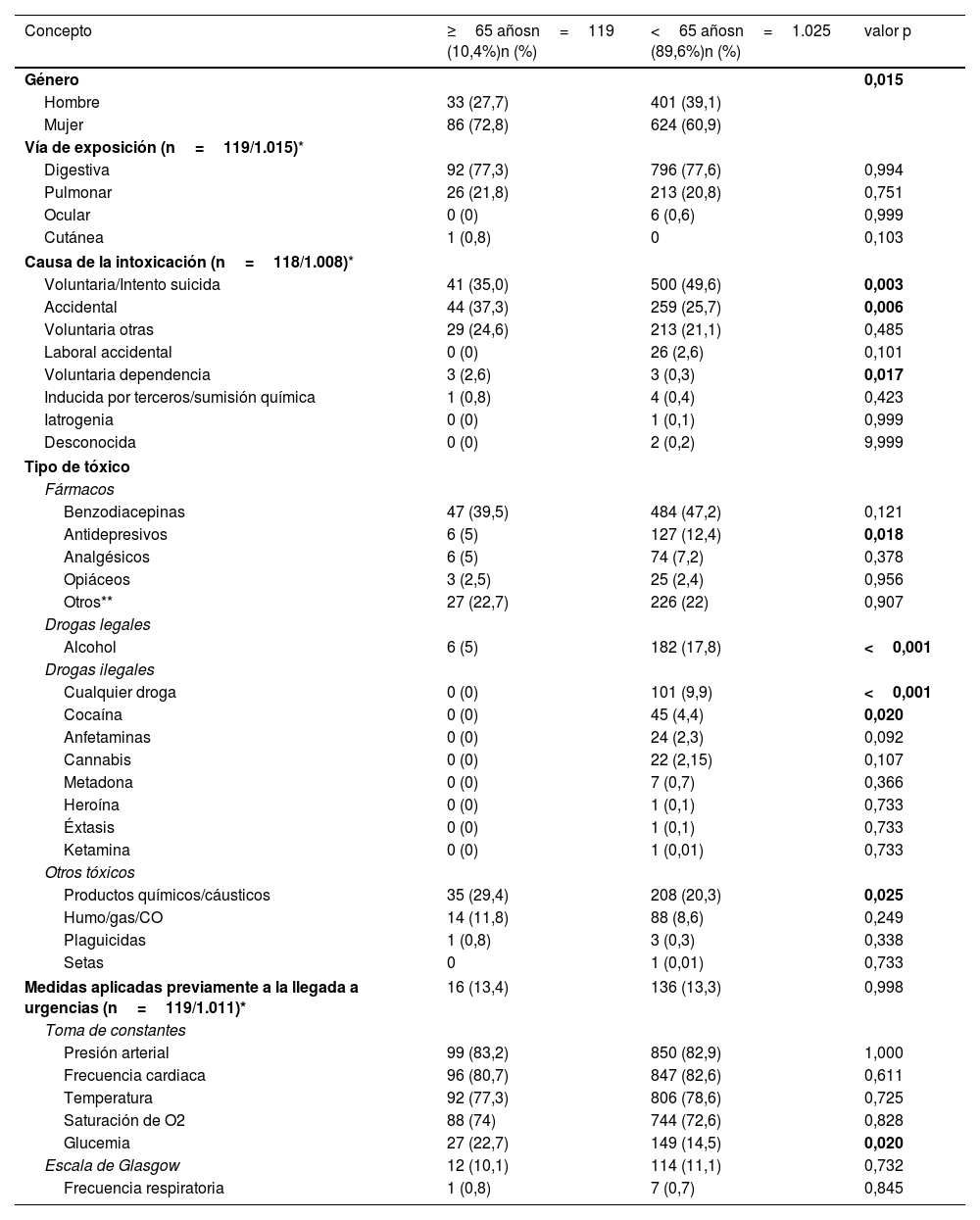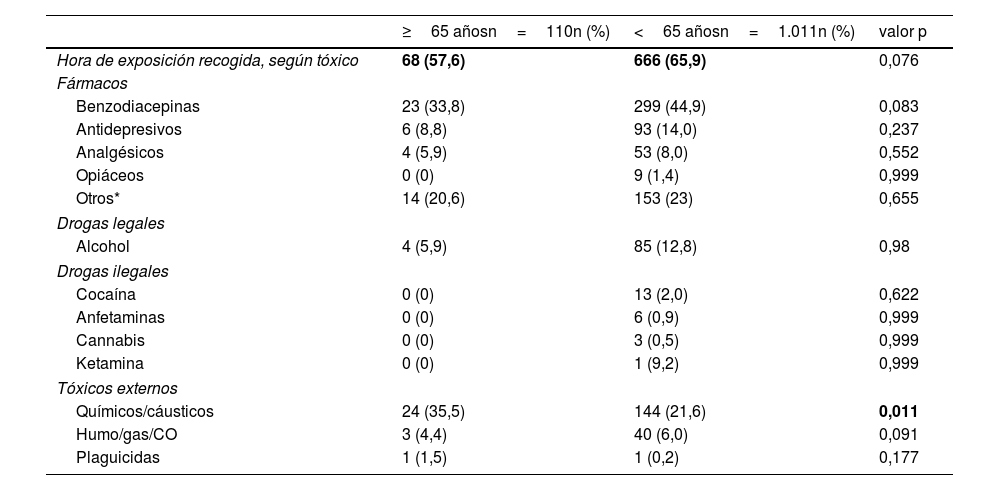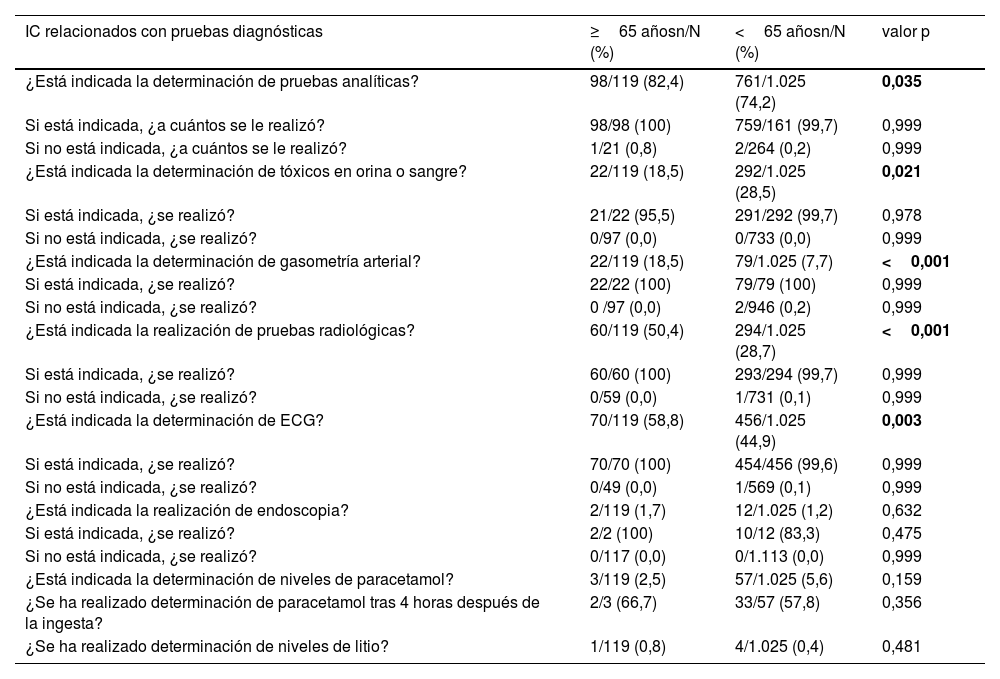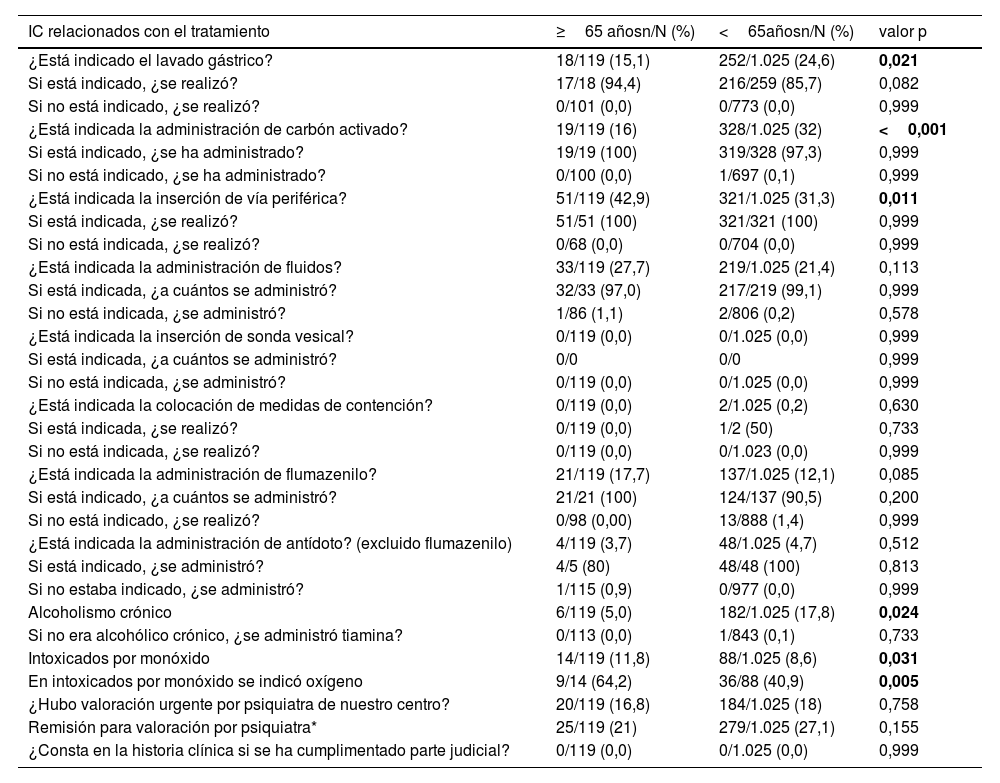El objetivo fue estudiar la epidemiología de las intoxicaciones agudas en el servicio de urgencias (SU) de un centro de tercer nivel y analizar el grado de cumplimiento de los indicadores de calidad (IC) en pacientes ≥65 años comparado con el resto de los adultos.
Material y métodosEstudio observacional y retrospectivo, se incluyeron los casos diagnosticados de intoxicación aguda de pacientes >14 años atendidos en el SU de un hospital terciario. Se recogieron las variables demográficas, tipo de tóxicos y causa de la intoxicación, 19 IC y destino, siendo la variable de resultado el grado de cumplimiento de los IC.
ResultadosSe registraron 1.144 casos, 10,4% (n=119) personas ≥65 años. Hubo mayor proporción de mujeres en este grupo (72,8 vs. 60,9%; p=0,015), más intoxicación accidental (37,6 vs. 25,7% p=0,006), y menos voluntaria (35,0 vs. 49,6%; p=0,003), menos intoxicación por alcohol (5 vs. 17,8%; <0,001) y ningún caso intoxicado por drogas ilegales (p<0,001). En la mayoría de los IC tenían un alto grado de cumplimento (> 85%) en personas ≥65 años como en el resto de los adultos. De todos los IC hubo diferencias en la indicación de oxigenoterapia en el caso de intoxicación por monóxido de carbono (CO) en aquellos ≥65 años (64,2 vs. 40,9%; p=0,005).
ConclusionesEl perfil epidemiológico de la intoxicación en personas ≥65 años es diferente al de los más jóvenes y con un cumplimiento de los IC. Dado los resultados obtenidos no consideramos que existan diferencias en la asistencia del paciente intoxicado con respecto a su edad.
The objective of this study was to examine the epidemiology of acute poisonings in the emergency department (ED) of a tertiary center and to analyze the compliance level with quality indicators (QIs) in patients 65 years and older compared rest of adults.
Materials and methodsThis was an observational and retrospective study that included diagnosed cases of acute poisoning in patients over 14 years old treated in the ED of a tertiary hospital. Demographic variables, type of toxic substances, and cause of poisoning were collected, along with 19 QIs and patient outcomes, with the main outcome variable being the degree of compliance with the QIs.
ResultsA total of 1144 cases were recorded, with 10.4% (n=119) being patients 65 years and older. Patients 65 years and older were more likely to be female (72.8% vs. 60.9%; p=0.015), experience more accidental poisonings (37.6% vs. 25.7%; p=0.006), and fewer intentional poisonings (35.0% vs. 49.6%; p=0.003). There were fewer cases of alcohol poisoning (5% vs. 17.8%; p<0.001), and no cases of illegal drug poisoning (p<0.001) in this age group. Most QIs showed a high degree of compliance (>85%) in both patients 65 years and older and rest of adults. However, there were differences in the indication of oxygen therapy in cases of carbon monoxide poisoning (64.2% vs. 40.9%; p=0.005).
ConclusionsThe epidemiological profile of poisoning in patients 65 years and older differs from that of adult patients, with a similar degree of compliance with QIs. Based on the results obtained, there does not appear to be significant differences in the management of poisoned patients based on their age.
Artículo
Diríjase desde aquí a la web de la >>>FESEMI<<< e inicie sesión mediante el formulario que se encuentra en la barra superior, pulsando sobre el candado.

Una vez autentificado, en la misma web de FESEMI, en el menú superior, elija la opción deseada.

>>>FESEMI<<<











